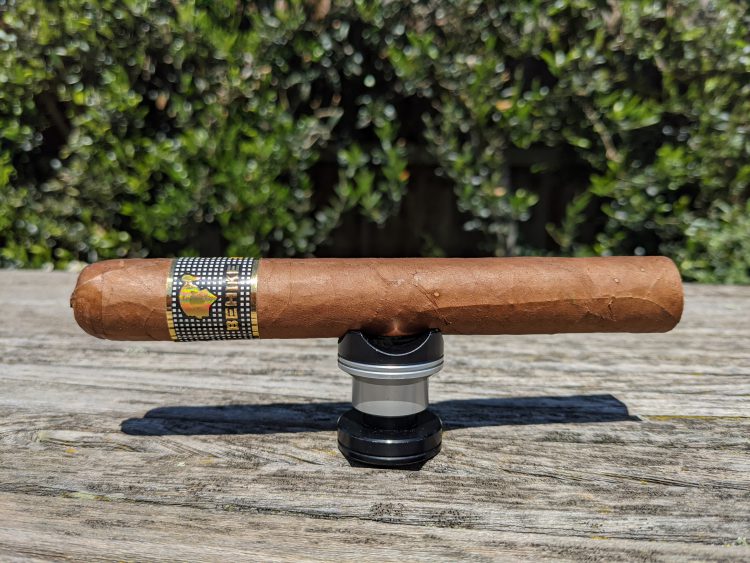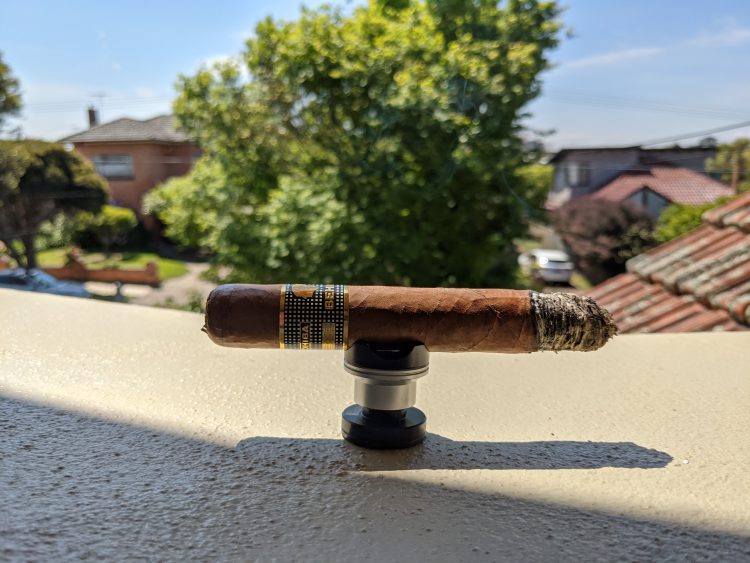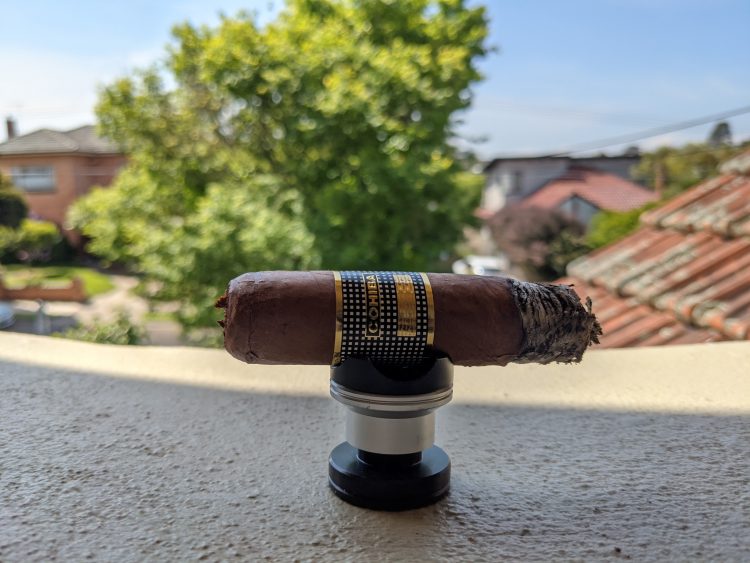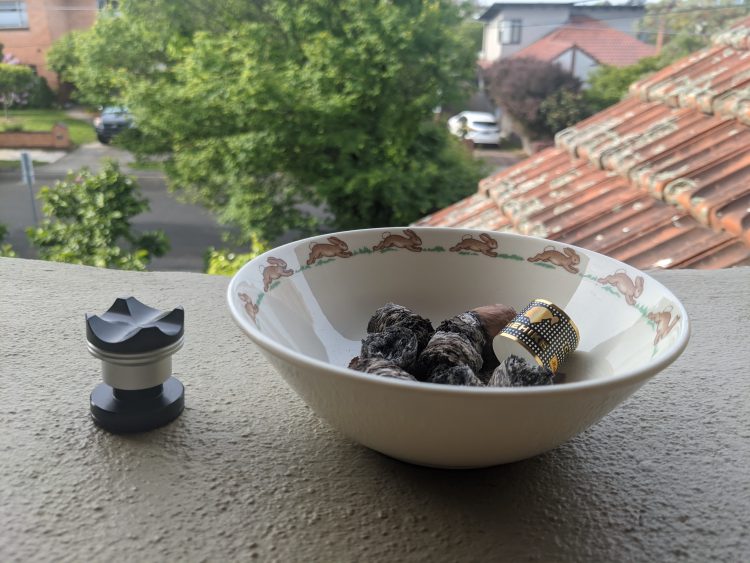When the Cohiba BHK line was released in 2010 they were seen as more or less just a set of fat Cohibas.
There was some talk at the time about how they contained the new medio tiempo leaf, and how that would keep their quantities limited, but the general understanding was that if you wanted them, you could get them. They were expensive, but they weren’t that expensive.
The main thing I remember about the buzz at the time were some grumblings from an owner of a Cohiba 40th Anniversary Humidor that the line was devaluing his purchase.
I paid $581 AUD for my box of ten 56s in January 2011. The USD price would have been $412. It seemed steep at the time. I could have had a box of twenty-five Lanceros for $700.
In 2023, it is a struggle to find a box of BHK 56 at any price. In Cuba, the RRP is $1,794 USD, but they never see the shelves there, disappearing immediately into the suitcase of the first flipper to bribe the clerk. There are some reports saying another 50% price hike is on the way in Cuba – reasonable given that it’s hard to find an online vendor listing them for less than $4,500.
The cigar I’m smoking today is the last from my original box. The 2010 production is generally agreed to be the high point of the line, and no doubt my box would fetch a premium on the market price if it was still complete. I gave my mother the box years ago, and she still uses it to keep earrings in as far as I know. Even empty it’s probably worth $400.
The defining feature of BHKs, and the reason for their shortage, is that they must have perfect wrappers. The one on this specimen is fantastic – a lovely Colorado shade, with delicate veining – however, there are at least three water blemishes on it. Perhaps standards weren’t as high at $412 a box.

Lit, it begins wonderfully, with smooth creamy notes. The strength is light to medium, with a grassy tobacco taste.
The story of the demise of the other nine cigars in this box is a shameful one. I was twenty-seven years old in the summer of 2011. I had a job, but didn’t yet have any responsibilities, and money was a meaningless concept.
I invited a few friends around for Luxury Night. It was marketed as such in an attempt to sell the $70 cover charge. I had to emphasise it because at my usual parties a charge was unheard of; the rule was to bring a bottle if you were feeling generous, but if not there would be plenty to go around. Not all my friends were in the same position as I was at that moment in life. Some were still in the perpetual twilight of childhood, still doing degrees, working part time jobs, living with their parents or in share houses. Others were in the dawn of adulthood; newly married, new mortgaged, or new parents. They didn’t necessarily have $70 to rub together. It was all well and good, but Luxury Night was more than I wanted to bankroll on my own. It was pay to play.
For the fee you got a BHK cigar, and a few snoots from the other luxury – a bottle of Grand Marnier Cuvée du Cent Cinquantenaire, an elixir that I had been chasing for a few years after being bamboozled by its advertising. “Hard to find, impossible to pronounce, prohibitively expensive… and yet, it’s the best thing we make.” Who could resist? It had set me back about $250.
In the main, the invitees were not cigar guys. Their experience ranged from “never had a cigar” to “a few puffs at parties.” In retrospect, a 56 × 166 mm Cohiba may have been a lot to ask of unseasoned smokers.
In the ‘never had’ camp was Alistair Wolf, then a Junior at EY, today a partner. He was invited because he could afford it. Beyond the cover, contributions to luxury night were not requested or encouraged, but Alister seemed to have interpreted the $70 as being payable in kind. He had brought a bottle of Marmont vodka, and insisted we all do shots of it as the first order of business, before he enthusiastically filmed the unboxing of the BHK and Cuvée.
By the time the cigars were lit he had cajoled us into another shot, and another followed shortly thereafter. The night quickly descended into madness. Not the civilised exploration of fine tobacco and complex liqueur I had imagined, but just the usual bacchanal: shots, yelling, bawdy stories, light wrestling, stupid selfies. We ended up going to a karaoke bar. Few of the BHK made it anywhere near the nub, but Alistair was the worst offender: as we headed to the cab, I found his abandoned on the gatepost, with perhaps a centimetre burned.

By the midway the cigar remains smooth, creamy and delightful. The medio tiempo leaf, which is the BHK’s trademark differentiator, is supposed to be the strongest of the strong, and give the cigar a punch not typically found out of Cuba. Perhaps it’s the twelve years of maturation, but I don’t see it. It remains light to medium.
Construction has been impeccable, with razor burn that never goes out, and ash that falls only on command. There is an herbaceous twang in aftertaste.
Cuvée du Cent Cinquantenaire is no longer the best thing Grand Marnier makes. It was superseded at the top of their line-up in 2011 by the Quintessence, which occupied a $900 price point, far above the $300 RRP that Cent Cinquantenaire was commanding at that time. In 2013 it was discontinued, with strategists deeming that there wasn’t enough “liquid differentiation” between Cent Cinquantenaire and the lesser Cuvée du Centenaire, replacing Cent Cinquantenaire with the Cuvée 1880, which had a slightly high cognac content and was priced at $350. Since then, the 1880 has itself been cut in favour of the Révélation, which ups the price of the second tier to $700, and the Quintessence has gained a mouth-blown decanter and moved passed the $2,000 threshold.
When I heard of the Cuvée du Cent Cinquantenaire’s demise, I set up stock alerts at a few online bottle shops in the hope of finding one last bottle. It was tough stuff to find even when produced, but after being discontinued it seemed a Quixotic endeavour. In 2019, long after I had given up any hope, I got an email indicating that a dusty case had been unearthed at a specialist liquor store not far from me. It was surely one of the last in the world. I bought the lot.

Notable about the BHK has been its fantastic blue smoke. It really has been a great cigar. There are notes of vanilla somewhere in there, along with a hint of a shoe polish which is more pleasant than it sounds, and a tart fruity saltiness that calls to mind ponzu sauce. The aftertaste is dry and sweet, with dried fruit and cinnamon spice.
The cigar puts itself out with an inch and a half to go, and is quite bitter after I relight it, probably more the fault of the hot flame than the tobacco. I try to cool it down, but it’s a difficult task this close to the end. A less frugal man would probably toss it, but I take it till it burns my fingers.
There is a good chance that this was the last BHK 56 I will have in life: their prices are increasing much faster than my income, and unless some magnanimous soul makes me a gift of one (surely EY partners can afford to be generous with such luxuries), I am already priced out. Foolishly, I didn’t stash some away when I could have. Hindsight, as always, is 20/20. I’m glad I had the foresight to acquire my reserve of Cuvée du Cent Cinquantenaire. I’m sure I’ll never be so fortunate as to sample the Quintessence.
The BHK is probably an overall better experience than the Robusto Especial 30 Aniversario; in its best moments that cigar rose above the peaks that the BHK achieved, but for the most part it was overaged while the BHK delivered throughout.
It is a difficult task to rank cigars at this level, and there is not much between this and the other heavy hitters of the vertical, like the Robusto Supremos and the DC. By a hair, I think that a 2010 BHK 56 might just have it.
